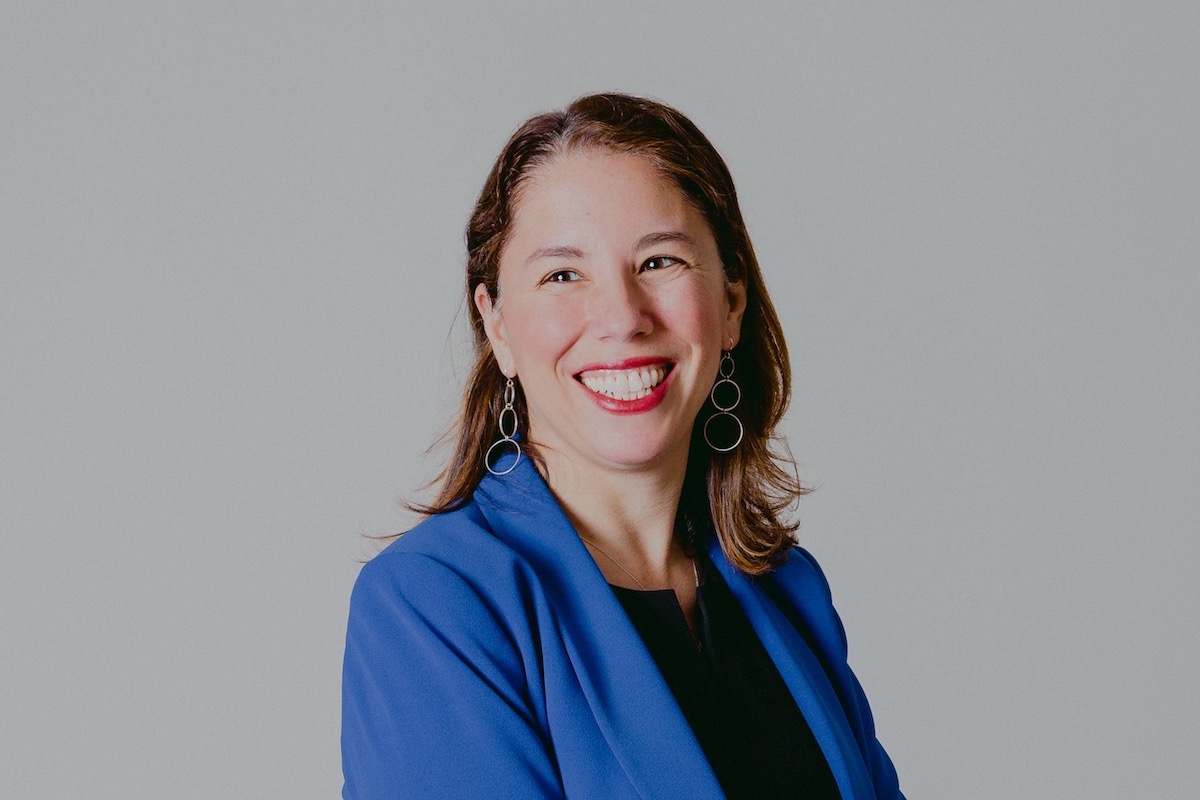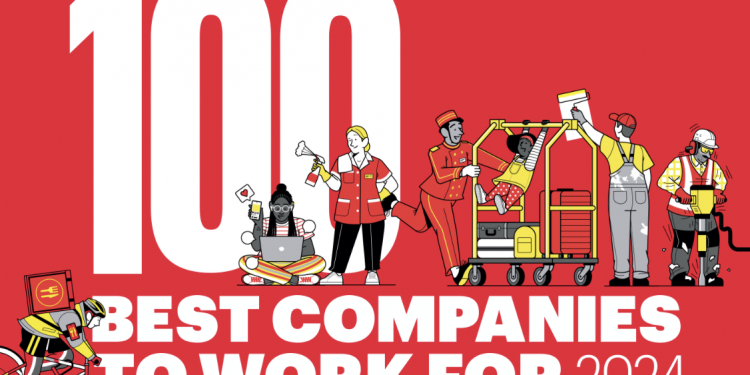The Century Foundation’s Julie Kashen Says Child Care Policy Is Needed for Businesses and the Economy, and ‘Now Is Our Chance’ to Pass It

(Bridget Badore/The Century Foundation)
One of the lingering challenges the pandemic brought to the forefront was the reliance working mothers have on child care policies, and how a lack of sufficient infrastructure can impact the economy. In March, only 57% of American women were working or looking for work, the lowest labor participation since 1988.
It’s been the impetus for a reconsideration of national child care policy on a level not seen in 50 years. On Thursday, the House voted to pass the child care and paid leave sections of the Democrats’ $3.5 trillion spending bill, which include higher wages for caregivers, universal pre-K for children ages 3 and 4, and 12 weeks of paid family and medical leave. To Julie Kashen, Director of Women’s Economic Justice at the progressive think tank the Century Foundation and one of the country’s foremost experts on the topic, this represents a shot at a generational shift in how the United States values caregivers and working parents.
“I really think we are closer to making major change than ever before,” she told JUST Capital this week.
Of course, the policies are part of a bill with support split down party lines, and on the business front, CEOs of America’s largest companies have taken different stances on how such policies should be funded. But aside from the political debate unfolding, we have found general support for the legislation, as well as for companies stepping in where the government isn’t. In our latest survey conducted with the Harris Poll, we found 78% of respondents supported a federal paid leave policy, and that the highest number of respondents (28%) said the federal or state government should play the primary role in providing child care.
In our discussion, Kashen detailed the evolution of the child care debate in America explained why she believes that regardless of partisan battles, it’s in businesses’ favor to support caregiving reform.
The following interview has been edited for length and clarity.
JUST Capital: As someone entrenched in this work, how have you seen the pandemic has change the way that people are talking about child care?
Julie Kashen: I think the pandemic really shone a spotlight on the fact that we have never invested in a care infrastructure that we’ve needed for decades. We’ve built our public policies and workplace policies around the assumption that there is a full-time caregiver at home, and that’s just not the reality, as the majority of parents are working, whether because they have to or they want to. With schools closed and child care programs closed, it became abundantly clear that somebody needs to be there to care for children. And when that’s not a possibility, work will be disrupted. There have been studies over time that have shown that not having reliable, steady child care leads to productivity disruptions for employers, but I think that became even more evident and gave employers more of a stake in this after the pandemic.
JUST: Can you guide me through why it has been so difficult to pass these kinds of policies on a national level even as society has changed so much over the past 50 years?
Kashen: It’s useful to go back a little further, to look at the fact that during WWII, Congress did enact a publicly funded child care policy because the incentive was for women to work at home while men were fighting abroad. They sunset the program when the war ended, and the incentive was women should go home and care for their children and give the jobs back to the men. So, when we wanted it, we were able to do it. And then in the ’70s, there was some very effective cultural messaging around this as an individual family responsibility, not a government responsibility.
What’s unsaid in that is the gender piece, that women should be the ones who are doing it, and the racial piece, that Black women should be working and white women should be at home caring for their children. If you look historically, Black women’s labor force participation, especially for mothers, has always been higher than white women’s. Then you had a lot of pop psychology, like Dr. Benjamin Spock putting out work that said it’s better for moms to be home with their kids, based on a kind of junk science. There was this guilt factor around the way things were supposed to be, and more and more pressure was put on individual families and individual women. The conversation turned away from the idea of government being a way to solve this. Meanwhile, we had kindergarten through 12th grade paid for, and that’s accepted as a public good, but anything before kindergarten was not. You had this dichotomy exist.
In the ’90s, the conversation was caught up in welfare, and if you wanted particularly Black women and low income women to work, you needed to do something about their child care needs. The Child Care and Development Block Grant was formed as part of the TANF, or Temporary Assistance for Needy Families, and it became tied to welfare while there was also a child and dependent care tax credit created that’s much more about serving middle class and wealthy families. So, basically, child care as an overall solution to gender, racial, or economic equity was not really the approach – it was approached as a work support.
Now we’re in this different moment where years of work have gotten people to see that perhaps child care and early education could be a public good. And when the sector collapsed along with so many other sectors during the pandemic, we saw government saying we’re going to come help bail out the airline industry and others, including the child care sector. And now we are able to have this conversation where Congress is considering legislation to guarantee eligible families child care, to put in the significant funds needed for higher quality care, which includes higher wages for those who are working in the industry. It’s really a transformative moment where we might be able to see the changes that we’ve needed all along.
JUST: Where does corporate America fit into this? The U.S. Chamber of Commerce and Business Roundtable have both come out in opposition to the spending bill, primarily because it entails a rise in the corporate tax rate. That said, you had leaders of some companies meet with Vice President Harris the other week to speak in support of child care policy, and you had around 300 companies come out in support of keeping paid leave in the budget.
Kashen: I think that as we break it down into the individual policies, we can get more support. We know, for example, that in 2019 the Council for a Strong America published a study that showed the U S was losing $57 billion a year in earnings, productivity, and revenue because of the lack of a child care system. So that has inspired folks, including the U.S. Chamber of Commerce, to really be talking about child care in a new way.
I think the general feeling, and it looks like your polling shows this, is that we are in a place where everybody needs to do their part in some way. Families need to partner with their employers and with the government to come together to solve these challenges. The pandemic reminded us of how interconnected we all are. And so even though we may fight about some of the details, I think that overall there’s support for these particular policies and there’s an understanding that it’s good for children and families, it’s good for racial and gender equity, and it happens to also be good for businesses and the economy. It’s rare for there to be these policies that really can be such a win for all.
JUST: You’re still hopeful that eventually something will pass.
Kashen: Yeah.
JUST: And what if it doesn’t?
Kashen: I’m not willing to go there! But look, December marks the 50th anniversary of the veto of the biggest opportunity that we had last time. Now is our chance.
JUST: In terms of looking at the actual child care infrastructure in the U.S., do you think it needs a complete overhaul, or is there a way to make more incremental changes to have it work better for families?
Kashen: We have a system in place that is a federal-state partnership where the federal government sets the parameters of the policy and then the states implement it. What we’re talking about doing is changing it so that instead of having limited funds leading to states having to resort to waiting lists and not serving all the children eligible, there will be the funding available to do it all better. And that means guaranteeing that every family that’s eligible gets the assistance because the money will be there for the providers of care through this program, getting fully reimbursed for the true cost of care. And so we’re building on what exists already, but we’re transforming it into something that is really going to serve millions of children and families around the country in much more meaningful ways.
JUST: And how do you see the, the role of center based care from the larger companies, like Bright Horizons and KinderCare, which work with many of the country’s largest corporations?
Kashen: We need all different forms of child care, but we need to be able to give parents maximum choice of what kind of care they’re using. Employers that have been able to do backup care and care onsite, I think that’s amazing, and we certainly want to see that type of thing continue. It’s not the solution for everyone, though. There are too many people left out if you rely only on that, but marrying what employers are already doing with this robust system of diverse options will be really powerful.
JUST: If you were to sit down with one of the CEOs considering these policies right now, what would your appeal be to them?
Kashen: Human capital is one of the most important parts of a company. Making sure that the people who work for you are able to care for their families makes them more productive, better employees, and it’s better for the overall business. And so investing public dollars in child care really helps create a more productive workforce and it can help with recruitment and retention among people who aren’t working or aren’t working as many hours as they could right now. And then think about your personal story – who cared for you when you were growing up and who cares for your children, and how might that relate to the people who work for you, and what they might need that’s the same or different than what you have or had?
JUST: Do you believe that it’s necessary for them to use their lobbying power to push for this legislation right now? Companies can tend to say they take care of their own employees and find that to be sufficient.
Kashen: I think that they do because I think there’s a lot of turnover today. You may end up missing out on some great future employees if we’re not collectively investing. And our GDP is influenced by this. If you can increase women’s labor force participation, you can increase the wages of child care workers – these things will directly impact our overall economic well-being. You can increase the consumer purchasing power of women. It does have ripple effects. It’s not just on individual companies.






